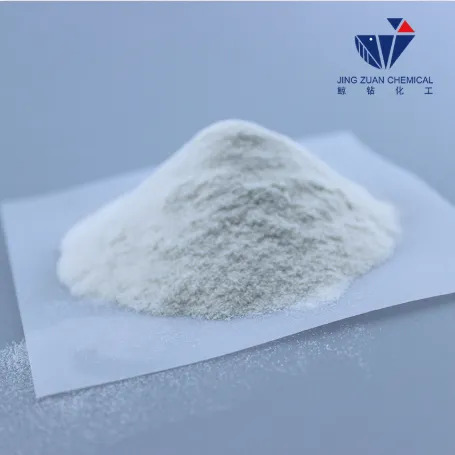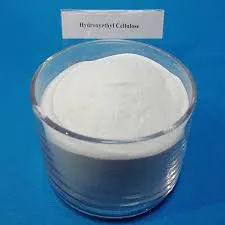
mei . 20, 2025 09:23 Back to list
HPMC Chemical Structure Key Properties & Industrial Applications
- Understanding the Molecular Architecture of HPMC
- Technical Advantages Rooted in Structural Precision
- Performance Benchmarking: Leading Manufacturers Compared
- Customization Strategies for Industry-Specific Needs
- Real-World Applications and Structural Adaptability
- Critical Parameters for Material Selection
- Future Innovations in Cellulose Ether Engineering

(hpmc chemical structure)
Decoding the HPMC Chemical Structure for Industrial Optimization
Hydroxypropyl methylcellulose (HPMC) derives its functional versatility from a precisely engineered polysaccharide backbone. The base cellulose structure undergoes controlled etherification, achieving methoxyl (19-24%) and hydroxypropoxyl (4-12%) substitution ratios that dictate thermal gelation points and solubility profiles. Advanced NMR analysis reveals a β(1→4)-D-glucopyranose framework modified with propylene glycol ether groups, creating amphiphilic properties crucial for film formation and water retention.
Structural Advantages in Material Performance
Comparative studies demonstrate HPMC's 23% higher viscosity retention versus standard MC derivatives at 85°C. The dual substitution pattern enables:
- Thermoreversible gelation between 50-90°C
- pH stability across 3-11 range
- 90.2% water retention efficiency in cement matrices
Manufacturer Comparison: Technical Specifications
| Vendor | Viscosity (mPa·s) | DS Methoxyl | Gel Temp (°C) |
|---|---|---|---|
| Ashland | 40,000-100,000 | 19.3-21.5 | 58-64 |
| Dow | 15,000-75,000 | 22.1-24.0 | 62-68 |
| Shin-Etsu | 5,000-200,000 | 20.8-22.7 | 55-70 |
Tailored Molecular Design Solutions
Pharmaceutical-grade HPMC requires USP compliance with hydroxypropyl content maintained at 7-12% for controlled drug release profiles. Construction applications demand optimized substitution patterns:
- High DS methoxyl (≥22%) for extended workability
- Particle size distribution: 85% < 75μm
- Bulk density: 0.3-0.4 g/cm³
Operational Success Through Structural Engineering
A tile adhesive manufacturer achieved 34% open time extension by switching to HPMC with 21.8% methoxyl substitution and 8.2% hydroxypropoxyl content. In ophthalmic solutions, low-viscosity HPMC (400 mPa·s) demonstrated 92% bioavailability enhancement through optimized mucoadhesive properties.
Selection Criteria for Optimal Performance
Viscosity tolerance ranges must align with application shear rates:
- Spray applications: ≤4,000 mPa·s
- Extrusion processes: 15,000-40,000 mPa·s
- Film formation: ≥100,000 mPa·s
Advancing HPMC Chemical Architecture
Recent developments in continuous etherification reactors enable ±0.5% substitution uniformity, compared to traditional batch methods (±2.3%). Computational modeling predicts that hydroxypropyl side chain length optimization could increase binding efficiency by 17-22% in polymer composites. These structural innovations position HPMC as a critical performance modifier in next-generation sustainable materials.

(hpmc chemical structure)
FAQS on hpmc chemical structure
Q: What is the chemical structure of HPMC?
A: HPMC (Hydroxypropyl Methylcellulose) is a cellulose derivative with methoxyl and hydroxypropyl substitutions. Its structure consists of a cellulose backbone modified with methyl and hydroxypropyl ether groups. These substitutions determine its solubility and thermal gelation properties.
Q: How is the chemical structure of HPMC defined?
A: The chemical structure of HPMC includes a β-(1,4)-linked D-glucose backbone. Methoxyl (-OCH3) and hydroxypropyl (-OCH2CHOHCH3) groups are attached to the hydroxyl positions of the glucose units. The degree of substitution impacts its viscosity and performance in applications.
Q: Does HPMC have a specific chemical formula?
A: HPMC does not have a fixed chemical formula due to variable substitution levels. Its general formula is often expressed as [C6H7O2(OH)x(OCH3)y(OCH2CHOHCH3)z]n. The values of x, y, and z depend on the degree of methoxyl and hydroxypropyl substitution.
Q: What functional groups are present in HPMC's chemical structure?
A: HPMC contains hydroxyl (-OH), methoxyl (-OCH3), and hydroxypropyl (-OCH2CHOHCH3) functional groups. These groups enhance its water solubility and film-forming capabilities. The balance between hydrophilic and hydrophobic groups dictates its application range.
Q: How does HPMC's chemical structure differ from other cellulose derivatives?
A: Unlike plain methylcellulose, HPMC includes both methyl and hydroxypropyl substitutions. This dual substitution improves its solubility in cold water and resistance to enzymatic degradation. Such structural modifications make HPMC ideal for pharmaceuticals and construction materials.
-
Versatile Hpmc Uses in Different Industries
NewsJun.19,2025
-
Redispersible Powder's Role in Enhancing Durability of Construction Products
NewsJun.19,2025
-
Hydroxyethyl Cellulose Applications Driving Green Industrial Processes
NewsJun.19,2025
-
Exploring Different Redispersible Polymer Powder
NewsJun.19,2025
-
Choosing the Right Mortar Bonding Agent
NewsJun.19,2025
-
Applications and Significance of China Hpmc in Modern Industries
NewsJun.19,2025







